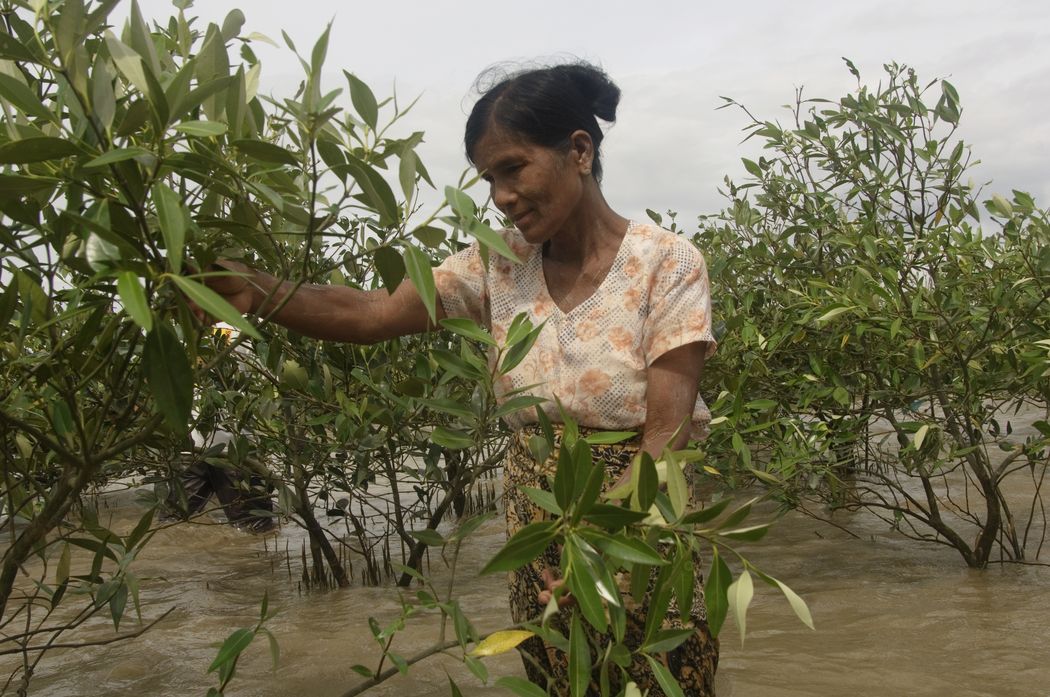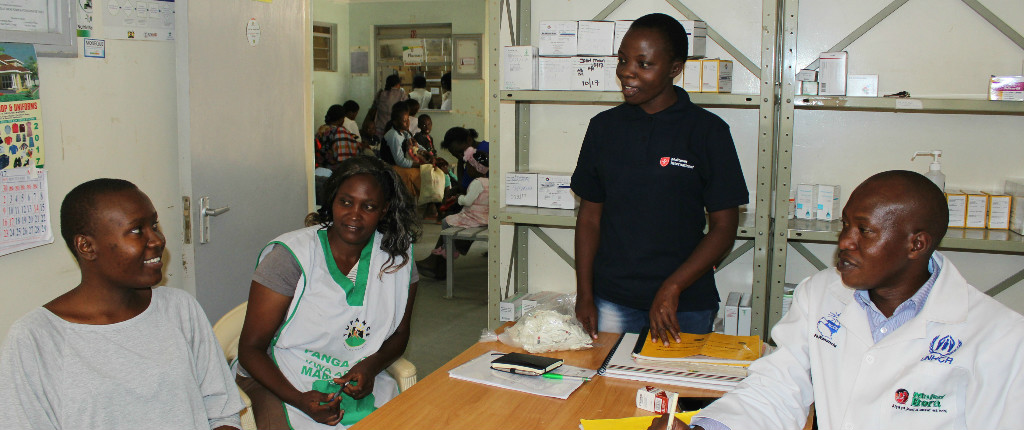
Infectious disease tuberculosis: spread, symptoms and how we help
According to estimates by the World Health Organization (WHO), around 10.6 million people contracted tuberculosis in 2021, including 1.2 million children. Although the disease is curable, 1.5 million people die from it every year. Tuberculosis is prevalent worldwide, but most cases occur in poorer countries in the Global South, where medical infrastructure and food supplies are often inadequate. The infectious disease carries a particularly high risk for immunocompromised and malnourished people and can be fatal.
As part of various aid projects, we work every day to help people diagnose and treat tuberculosis locally and to reduce the incidence of the disease in the long term through preventive measures.
What is tuberculosis?
Tuberculosis (TB) is an infectious disease, which is caused by the bacterium “mycobacterium tuberculosis” in most cases. Since the disease primarily affects the lungs, TB is oftentimes referred to as ‘pulmonary tuberculosis’.
It is one of the most common infectious diseases worldwide - along with malaria and HIV - and is the second leading cause of infectious death after coronavirus (as of 2022). It is estimated that around one quarter of the global population is infected with tuberculosis bacteria, though in most people the disease never breaks out. As such, they are living their entire life with the disease but without symptoms. The disease is still particularly widespread in Africa and Southeast Asia.
Types of tuberculosis and their clinical pictures
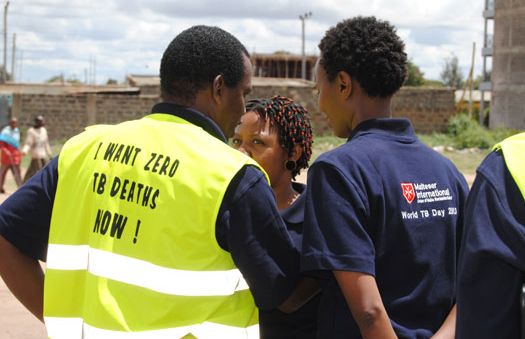
The clinical picture of tuberculosis is multi-layered. This is partially due to the various types of tuberculosis. The complaints of patients differ depending on which organs are affected.
- Infection of the lungs (pulmonary tuberculosis): More than 80% of TB infections worldwide are pulmonary tuberculosis, as this organ is most frequently infected by the pathogens. This is due to the transmission of the bacteria by droplet infection, causing pathogens to enter the lungs, where they can then multiply further.
- Infection of other organs (organ tuberculosis, also known as extrapulmonary tuberculosis): The pathogens can also reach other organs via the blood and lymphatic system. In rare cases, the meninges, spleen, liver, lymph nodes, kidneys and adrenal glands or the vascular membrane of the eye are also affected. Less frequently affected are, for instance, bones, joints, or the central nervous system.
- Infection of multiple organs (miliary tuberculosis): miliary tuberculosis occurs when the pathogens of an infectious disease multiply and travel to other organs, thereby spreading the disease in the body. Miliary tuberculosis can cause severe inflammation in the corresponding organs, such as meningitis.
In a severe case due to the simultaneous attack of multiple organs, a rapid physical deterioration occurs, which is why the disease was also known as ‘consumption’ for a long time.
Transmission and infection of tuberculosis
The disease is usually transmitted from person to person by droplet infection. In this process, the mycobacteria are released in tiny droplets (aerosols) by infected persons when they talk, sneeze or cough. Anyone who inhales these droplets can contract tuberculosis. However, tuberculosis is not as contagious as other infectious diseases, such as chickenpox or coronavirus.
Many different factors influence whether an infection occurs. The longer, more intensive, and more frequent the contact with an infected person, the more likely infection is. However, if the other person excretes only small amounts of the mycobacterium, the risk of infection is lower. An intact immune system can also help prevent infection. For this reason, the infection spreads more frequently in regions where there are inadequate hygienic conditions, people have a weakened immune system or live in cramped living conditions.
The incubation period - i.e., the time between the first infection and a detectable immune response - is on average six to eight weeks for tuberculosis. During this time, an intact body's own defense system often manages to combat the pathogens successfully.
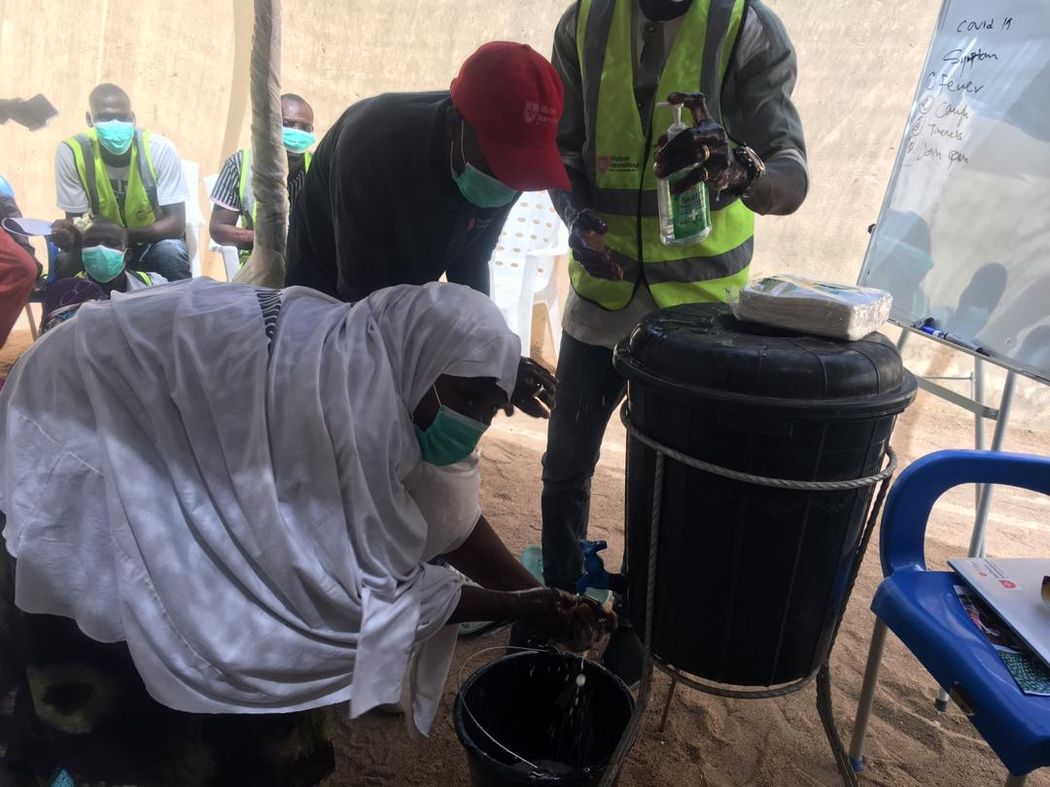
These population groups are particularly at risk
In some groups of people, there is a higher chance that a tuberculosis infection will result in symptomatic disease. Generally, the disease affects mainly adults, but all generations can become ill. Groups of people particularly at risk include:
- People who are infected by HIV
- Malnourished people
- People with alcohol and drug addiction
- People with diabetes
- Cancer patients
- People with a weakened immune system (e.g., due to immunosuppressive therapy)
About 8% of all tuberculosis patients are infected with tuberculosis and HIV simultaneously. The combination of both infections carries a deadly risk: tuberculosis is considered the most frequent cause of death for people with HIV. People infected with the HI virus have a severely weakened immune system, so that an additional illness with tuberculosis is around 16 times more likely than in people with intact body defenses.
Symptoms and stages of tuberculosis
A tuberculosis disease progresses through several stages. Depending on the stage, patients experience no to very severe symptoms and complaints. The symptoms that ultimately occur also depend greatly on which organs are affected by the pathogen.
- Latent tuberculous infection: This course of disease occurs when people carry the bacterium in their body but there is no outbreak of the disease. Latent tuberculous infection is therefore characterized by the fact that infected people do not show any complaints or symptoms. This diagnosis usually occurs in people with intact immune systems, whose bodies are able to fight the pathogen to a large extent without getting rid of it completely.
- Primary tuberculosis: Primary tuberculosis occurs when pathogens survive and continue to multiply after the initial infection. The body's immune response causes inflammatory foci to form in the body, which calcify into small nodules - known as tubercles. Primary tuberculosis causes no to mild symptoms such as fatigue, weakness and exhaustion, mild fever or loss of appetite. If the lungs are affected, coughing may also be a symptom at this stage. Around 90% of tuberculosis cases subside after this stage.
- Post-primary tuberculosis: Oftentimes, an initial infection comes to halt when the bacteria encapsulate in the connective tissue of the infected person. The pathogens of tuberculosis can therefore lie “dormant" in the body of infected persons for a longer period of time. In post-primary tuberculosis, the disease is triggered because pathogens are reactivated. Sometimes infected people only show symptoms years or even decades after the initial infection, which is why the disease is particularly insidious. Reactivation of the bacteria occurs often, for example, when the body's own defense system of the theinfected person is weakened. Possible symptoms include fever, night sweats, cough and shortness of breath, neurological deficits or headaches.
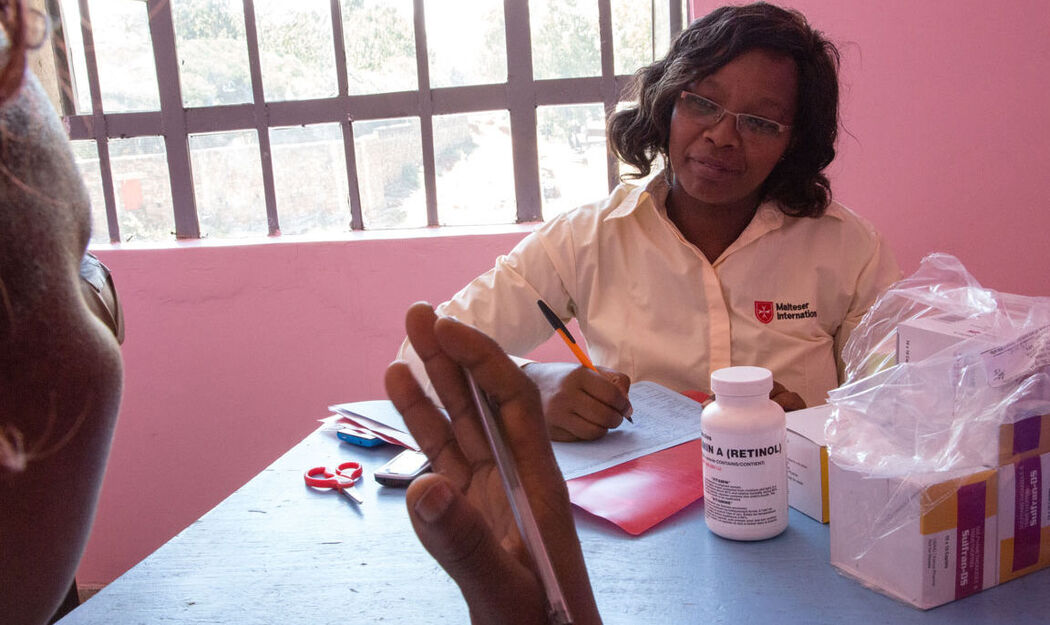
Common symptoms of tuberculosis at a glance
Tuberculosis progresses through several stages. Depending on the stage, symptoms and complaints of patients may vary from no to very severe symptoms. The symptoms that ultimately occur also depend greatly on which organs are affected by the pathogen.
- prolonged cough, occasionally with bloody sputum
- chest pain
- fatigue, weakness and exhaustion
- loss of appetite
- unwanted weight loss
- fever
- night sweats
Possible late effects of tuberculosis
If tuberculosis is untreated or detected too late, it can lead to permanent organ damage due to the localisation of inflammation in the affected organs. If patients do not receive appropriate treatment after diagnosis, the tuberculosis infection will be fatal. An existing immune deficiency can also lead to a fatal course of the disease.
In addition to the health-related consequences of tuberculosis, there are many other serious effects. If a member of a household becomes ill with tuberculosis and as a result is temporarily or long-term unemployed and has to bear treatment and medication costs, the economic consequences for the family can be devastating. According to the World Health Organization (WHO), patients in about half of the households affected by TB face additional costs of more than 20% of their total income.
Is tuberculosis curable?
Tuberculosis is curable with proper drug treatment. However, in low and middle income countries, there is often a lack of funds for adequate treatment of the disease. People affected by poverty are often denied access to medication. Without proper treatment by a doctor, tuberculosis is often fatal.
Treatment and prevention of tuberculosis
In the standard treatment of tuberculosis, patients receive antibiotics for a course of 4 or 6 months, in which several drugs are used in combination. With the help of the active ingredients isoniazid, rifampicin, ethambutol and pyrazinamide, which are primarily used in the therapy of adult tuberculosis patients, the bacteria can be successfully killed over the months.
If the standard therapy is not effective even after four to six months, then a drug-resistant tuberculosis needs to be taken into consideration. In this case, some or all of the active substances mentioned cannot be used for treatment. In the case of such pathogen resistance, other drugs are used, but they are less effective and more expensive. Moreover, therapy in the case of resistance is more complex than standard treatment and also lasts significantly longer overall – sometimes more than a year instead of a few months.
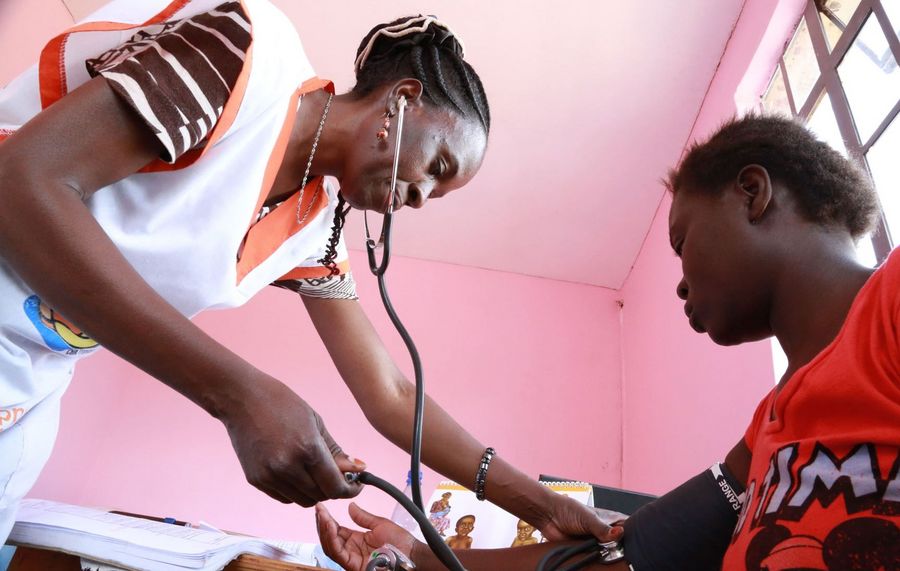
For prevention in the case of latent tuberculosis, a prophylactic tuberculosis treatment will be carried out. This can help prevent the outbreak of the disease. For the prevention of active tuberculosis, the same drugs are used as for standard therapy. However, these are administered over a shorter period of time, so that the duration of intake is reduced to one to three months.
To protect against further infections and prevent the outbreak of the disease, infected people should isolate themselves as quickly as possible. Hereby it is particularly important that close contacts are also identified and screened for tuberculosis infection to avoid further undetected spread of the disease. In hospitals and other medical facilities where close contact between people may occur, compliance with hygiene measures is very important.
Tuberculosis vaccination
A tuberculosis vaccine has already been developed and is also known as the Bacillus Camlette-Guérin (BCG) vaccine. Named after its inventors Albert Calmette and Camille Guérin, the vaccine contains mitigated pathogens and has not been recommended in Germany by the Standing Commission on Vaccination (STIKO) since 1998. Reasons for this include the low risk of infection in comparison to a relatively high risk of side effects. In other parts of the world, the vaccination continues to be administered - especially in countries where tuberculosis is widespread. However, the vaccine does not prevent initial infection or reactivation of the pathogen but is mainly used to treat miliary tuberculosis in children.
Global differences: prevalence and incidence of tuberculosis in a worldwide comparison
The growing population density during industrialization, inadequate hygiene conditions and lack of medicines led to a rapid rise of tuberculosis cases in the 19th century. The infectious disease was also referred to as the "white plague" at that time. Today, the number of new infections in countries of the Global North are barely moving. To exemplify, only 3 % of all new cases of tuberculosis occur in Europe.
In 2021, an estimated 10.6 million people worldwide will have tuberculosis. Around 1.5 million people still die from the infectious disease every year - even though it is easily treatable. Countries in the Global South are particularly affected: Around half of all people infected with tuberculosis live in India, China, Bangladesh, Nigeria, Pakistan, the Philippines, Indonesia, and South Africa.
Accordingly, there are vast global difference in tuberculosis infections - the number of new cases of tuberculosis (per 100,000 inhabitants per year) ranges from less than ten to more than 500. Countries with particularly few new cases include Germany, Spain, Sweden, Canada and Australia, each with fewer than ten cases per 100,000 inhabitants. The highest numbers, on the other hand, are found in Africa, where the countries most affected include South Africa, Gabon and the Central African Republic, where more than 500 cases of tuberculosis are recorded each year (as of 2021).
Our measures against tuberculosis

Malteser International has been working to combat tuberculosis in severely affected countries for many years. We have been actively fighting tuberculosis in Nairobi since 2018, for instance. In the capital of Kenya, a large proportion of the population is infected with HIV and are therefore particularly vulnerable to tuberculosis. To educate people on the curable disease, we are implementing awareness and de-stigmatization measures on the ground. For tuberculosis patients, we also provide comprehensive health and nutritional counseling and help people to continue drug therapy for the minimum duration required.
In Myanmar, too, many people are affected by the disease. Therefore, Malteser International offers tuberculosis awareness events in different communities and educates on the infectious disease. Patients are referred to doctors in the nearest hospital or receive financial support to obtain the necessary medication.
The TB-program in Myanmar also involves the deployment of volunteers to support with the screening of suspected cases and send affected people to community hospitals for treatment. The fees for transport and initial diagnosis of patients are covered by Malteser International.
To commemorate the annual World Tuberculosis Day on March 24th, the entire population shall be educated on the adverse impacts of the disease. The day marks the discovery of the tuberculosis pathogen on the 24th of March 1882 by Dr. Robert Koch. On this occasion, the importance of the fight against the infectious disease will continue to be highlighted.

